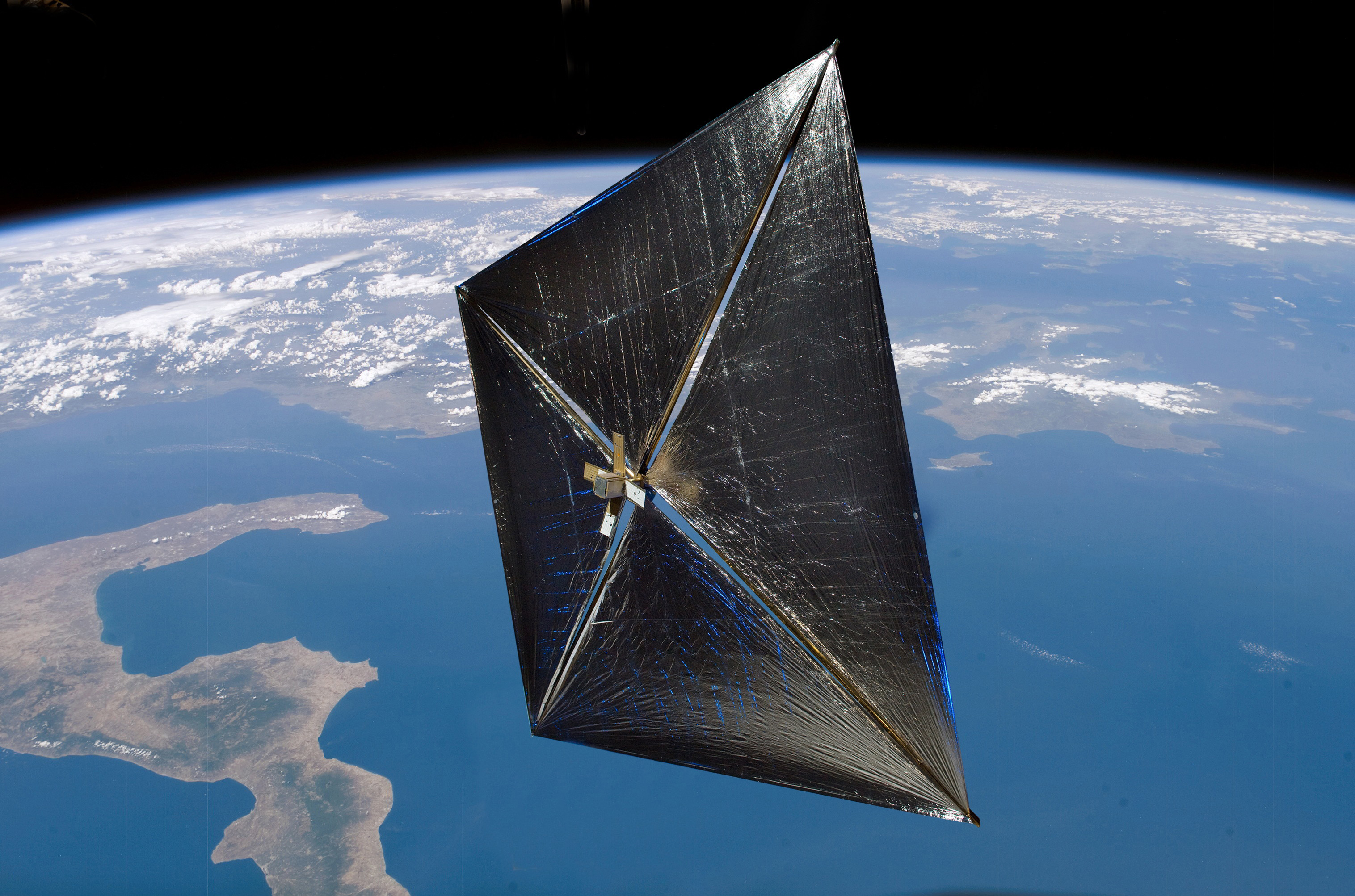Last Friday NASA's NanoSail D unfurled her sails in low orbit, NASA's first serious foray into solar sailing. NanoSail D is small, only 10' on a side. But her mirrored sails make her easily visible from earth. NASA is also using this mission to enlist the help of citizen scientists from the HAM radio community and the space photography community for telemetry and tracking. This transition to a paradigm of backyard astronautics is crucial if we ever want space travel to be available to anyone other than governments.
The fastest rocket ever built was the New Horizons spacecraft, launched in January 2006 to Pluto and the Kuiper Belt at a velocity of 23 km/sec. At this speed it will arrive at Pluto in July 2015.
Solar sail technology, in addition to almost zero fuel consumption, allows a spacecraft to travel at around 140 km/sec (87 miles/sec). That's about from Seattle to Mount St. Helens in one second. Or earth to Jupiter in about 2 1/2 months. Which is faster than any object ever made by humankind. It would still take more than 2000 years to reach Alpha Centauri, but for interplanetary travel solar sailing is simple, fast and oh-so-efficient.
NanoSail D has two main predecessors, Japan's IKAROS (launched last year) and (Carl Sagan's widow) Ann Druyan's Cosmos-1, which was launched into low orbit using a navy-surplus Russian Delta III ballistic missile submarine. Which in my mind is one of the best swords-to-ploughshares conversions ever. Sadly, the Volna rockets all failed, and none of the Cosmos craft were ever successfully inserted into space. But the concepts were sound, and now we have NanoSail D.
Looking forward to seeing how far we go with this technology. For travel within our solar system, the potential is huge.
And if you hope to one day pilot ships to the other planets, you should probably be getting your Auxiliary Sail endorsement now.

No comments:
Post a Comment